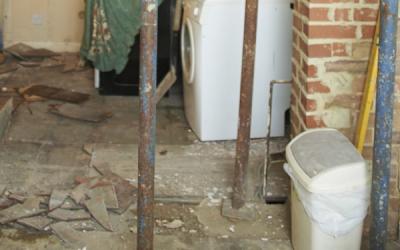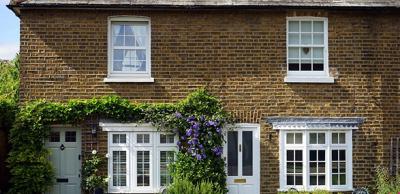Wall repair basics
Did you know that removing plaster, plasterboard, cladding and render from uninsulated external walls is notifiable work if you’re affecting more than 50% of the wall? This means you must involve building control - making a Building Notice application to your local authority is an easy way to get the work certified.
When doing this kind of work on more than 50% of the surface the building regulations say that you must thermally upgrade the entire wall with insulation. Whilst insulating a wall will improve the thermal efficiency of the building and result in lower fuel bills for the homeowner, doing it incorrectly can lead to problems such as condensation, mould growth, poor internal air quality and damage to the building structure.
This is because moisture will condense in areas with no insulation, and the insulation envelope can prevent the wall ‘breathing’.
Wall repair basics: Important considerations
- With insulated external walls the insulation should be renewed to an equivalent or better standard.
- Internal or external insulation should be continuous across the whole wall. This means removing and adjusting fixtures such as soil pipes, downpipes etc. Don’t forget to insulate window reveals and doors.
- The walls’ ability to ‘breathe’ out moisture will be affected. So the building should be adequately ventilated with extractor fans in high moisture areas such as kitchens and bathrooms, and background ventilators to modern double-glazed windows.
- Where insulating externally, ensure rainwater won’t get in behind the insulation as it’ll cause damage to the wall, the insulation, render and fixings.
- Reducing the insulation of any elements will affect the performance of the whole building including heating systems, and resistance to condensation.
- Replacing external walls or sections of walls, including removing ply membranes to timber-framed walls, is a structural alteration and so needs building control involvement.
- But removing and replacing plaster or plasterboard from internal walls does not require a building control application, unless it’s a timber frame party wall.
- If you’re planning to remove or replace an internal wall that supports a floor, ceiling, beam or roof, this will be a structural alteration - in which case you need building control approval.
- Failure to get approval for relevant work can lead to technical failures and leave both you and your customer liable to enforcement.
To be on the safe side, ensure all notifiable work is approved under the building regulations. Submit your building control application directly to your local building control team using our free post code search tool to find your local team.
Please Note: Every care was taken to ensure the information was correct at the time of publication. Any written guidance provided does not replace the user’s professional judgement. It is the responsibility of the dutyholder or person carrying out the work to ensure compliance with relevant building regulations or applicable technical standards.
Sign up to the building bulletin newsletter
Over 48,000 construction professionals have already signed up for the LABC Building Bulletin.
Join them and receive useful tips, practical technical information and industry news by email once every 6 weeks.
Subscribe to the Building Bulletin




Comments
Add new comment